Caproni Ca.3 (UPDATED)
Here is Polish firm Choroszy Modelbud's 1/72 kit of the Caproni Ca.3 with 25.4mm gun, together with six figures from a Waterloo 1815 set of Italian WWI soldiers, the latter having arms and legs repositioned for the project. The vignette was inspired by an image in the Windsock Datafile 144, Caproni CA.3 at War, Vol.1, by Gregory Alegi.
My CDL is simply an off-white sprayed over a grey primer, with the rib areas lightly sanded to reveal 'rib shadow' beneath the fabric (I'm not a regular WWI modeller). I should give anyone thinking of building this kit a heads-up, as there must be nearly 200 parts, none of them labelled, and the instructions, apart from a couple of exploded views, are basically 'here's a drawing of what the aircraft should look like when you're finished' - no parts' number references at all. Further, being a resin kit in this scale, it is both fragile and dense, due to the resin weight. For that reason I decided to use cut-to-fit fine brass wire rather than 'rigging thread', to add stability to the model, although a little out of scale.
(In England, one seventy-second is referred to as 'gentleman's scale.' I haven't modelled in this scale for years, so either it's (1) simply a scale I choose no longer to address, or (2) a statement of fact that I'm no longer a gentleman.)
Recently, one of my daughters asked if I could let one of my grandsons have a 'spare' model for his bedroom (I had previously supplied a 1/48 Corsair to hang from his ceiling). Nothing I have now fits into that category exactly, but then I remembered the Caproni.
I post the images here, as a farewell to a tiny, delicate model that we are unlikely ever to see again in one piece, even now disappearing into the bedroom of a five year old boy.
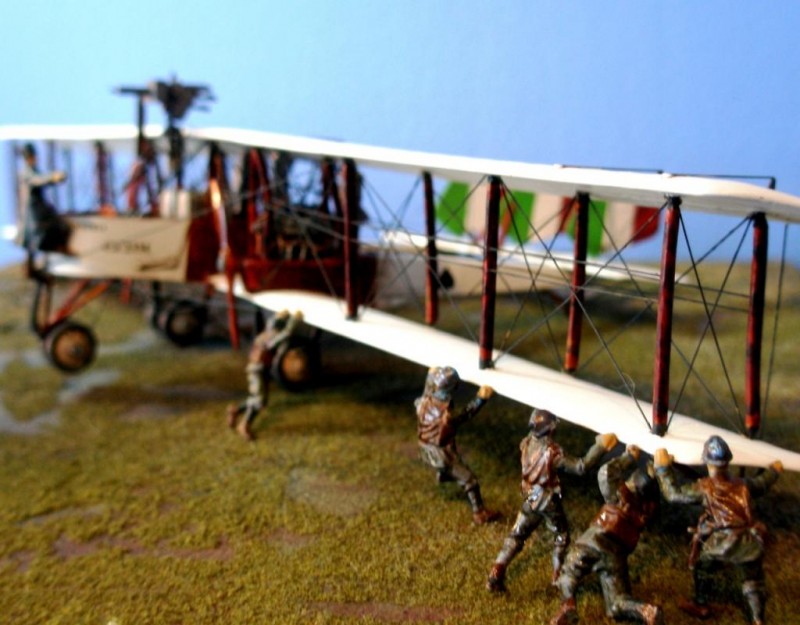
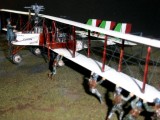
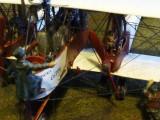
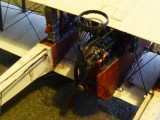
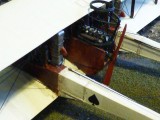
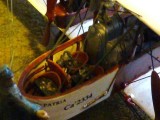
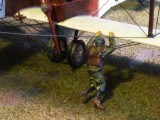
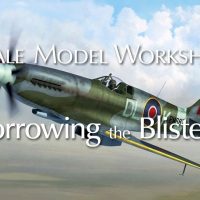
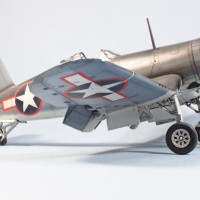
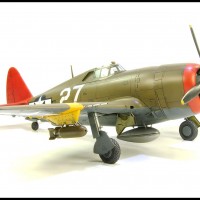
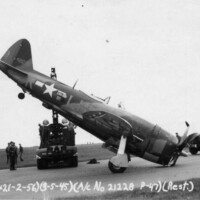
Nice one Rob, some what different but superbly done.
Any chance of more pics, the first one seems a bit blurred.
Hi Simon,
The photo was taken with a blurred background feature. I've located a few additional photos which I've now added to the listing above.
Cheer Rob they show the detail amazingly.
A fantastic build.
With the Begining of The First World War being a 100 years ago this year,, I can see a lot of stuff from that era appearing.
Rob,
What a great story, and what a great model! You needn't worry, only a gentleman could have built such a beautiful model and diorama. Thank you for sharing this. I am probably showing my ignorance, but what does "CDL" mean?
Clear Doped Linen - the clear-to-yellowish varnish used to treat the fabric of WWI aircraft to 'draw' the slack and tighten the canvas across the frame.
Nice vignette to bring life to the model Rob. I like the repurposing of the figures for the scene. The manufacturer sure didn't make this a "customer friendly" kit by any means. You had the patience to see it through and it paid off. If 1/72 is "gentleman's scale" what is "ordinary scale" in UK? Is it 1/76? I have some old Airfix kits that are OO scale or ordinary scale.
1/48 is known as 'quarter scale' and this is probably the most popular scale, judging by the number of 1/48 kits on the market.
Can't say I'm familiar with OO scale, except maybe in train scales. Anyone out there heard of it as an aircraft scale?
Having been a UK railway modeller for a number of years I'm familiar with OO scale. In fact, it's not a scale at all, but a measurement of the railway track gauge of 16.5mm, a size which is used by both HO (mainly European and US railway modellers, and 00 (used almost exclusively by UK modellers). HO modellers work to a 'scale' of 3.5mm to the foot, 00 is 4mm to the foot. When used for figures and other small accessories the difference is scarcely noticeable, but when applied to larger models (e.g. locomotives and rolling stock) there is quite a difference. The reason for the two scales is that UK rolling stock works to a smaller loading gauge then most other countries, meaning that the models are smaller as well. Unfortunately in the second half of the 20th century most commercially available electric motors wouldn't fit a UK model built to 3.5mm/ft, so a decision was made to move to the slightly larger scale, but still keeping the 16.5mm gauge. So, many modelling accessories like figures, vehicles and buildings are labelled as '00/H0 scale'. According to my pocket calculator 4mm/ft works out at 1/75, and 3.5mm as 1/85, so take your pick!
Rob,
I will stay out of the what's' what in the world of scales and just say you did a magnificent job on this. Tho complete this with to information to you from the plans is a definite sign of expert modeling.
another wonderful daring project rob